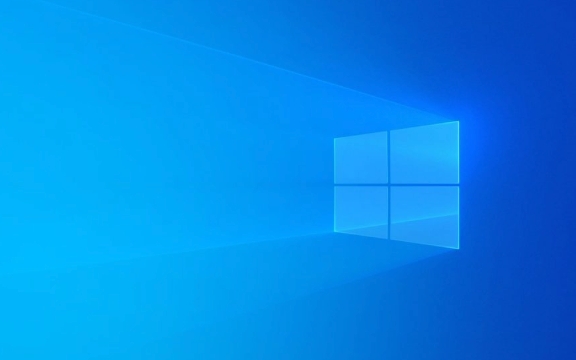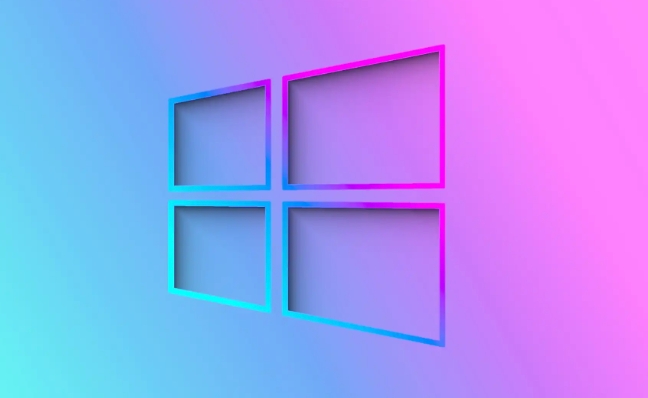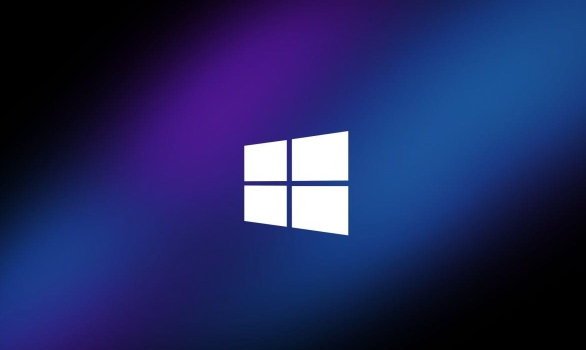 Computer Tutorials
Computer Tutorials
 Troubleshooting
Troubleshooting
 What to do if an NVMe SSD is not detected during Windows installation?
What to do if an NVMe SSD is not detected during Windows installation?
What to do if an NVMe SSD is not detected during Windows installation?
Jul 13, 2025 am 01:31 AMIf the NVMe SSD is not displayed during Windows installation, first check the BIOS/UEFI settings to ensure that it is correctly recognized and enabled, set the storage mode to AHCI, turn on CSM or adjust the Secure Boot status if necessary; secondly, use the latest Windows installation media containing NVMe drivers, and select the correct partitioning scheme (UEFI selects GPT, BIOS selects MBR); then confirm that the NVMe drive is physically connected, try to replace the slot or test it in other systems; finally, press Shift F10 through the installation interface to call up the command prompt, enter diskpart and execute list disk to check whether the disk exists. If it exists, use select disk #, clean and convert gpt/mbr to initialize. In most cases, the problem stems from configuration rather than hardware failure.

If your NVMe SSD isn't showing up during Windows installation, it can be frustrating, especially if you're trying to set up a new system. The good news is that this issue is fairly common and often has straightforward fixes.

Check the BIOS/UEFI Settings
Before jumping into complicated solutions, start with the basics—your motherboard's BIOS or UEFI settings. Sometimes, the NVMe drive won't show up simply because it's not enabled or configured correctly in the firmware.
- Make sure the NVMe drive is listed under storage devices in the BIOS.
- Check if Storage Mode is set to AHCI instead of RAID (especially on Intel chipsets). RAID mode may prevent detection unless drivers are injected during install.
- If there's an option for CSM (Compatibility Support Module) , try enabling it temporarily. It helps with legacy boot compatibility.
- Also, ensure that Secure Boot is either enabled or disabled based on your installation media type—sometimes mismatched modes cause detection issues.
You don't need advanced knowledge here; just go through each relevant setting and make sure they align with standard setup practices.

Use the Right Installation Media
Not all Windows installation USB drives are created equal. If you're using a version of Windows that doesn't include native NVMe drivers (older versions like Windows 10 1703 or earlier), your drive might not be recognized at all.
- Try using the latest Windows ISO from Microsoft. Newer versions usually have better hardware support.
- When creating the USB installer, use tools like Rufus or the official Media Creation Tool and ensure you're using the correct partition scheme:
- For UEFI systems: GPT
- For older BIOS systems: MBR
Some motherboards also require USB 3.0 or NVMe drivers to be injected manually into the installer. This is more common on older AMD X570 boards or some Intel Z390 models.

Connect the NVMe Drive Properly
This sounds obvious, but it's worth double-checking. An NVMe SSD needs to be seated properly in the M.2 slot or U.2 connector, depending on your setup.
- Re-seat the NVMe drive to ensure solid contact.
- Confirm that the drive is getting power and isn't loose.
- If possible, test the NVMe drive in another system to confirm it's working.
- Try a different M.2 slot if your motherboard has more than one.
Also, some motherboards disable certain M.2 slots when specific PCIe slots are occupied. Refer to your motherboard manual to see if that's happening in your case.
Access Disk Management or Use Command Prompt
Sometimes, the NVMe drive is actually detected by the Windows installer, but just not visible in the initial setup screen. You can check this by opening a command prompt from the installer:
- Press
Shift F10during installation to open the command prompt. - Type
diskpartand hit Enter. - Then type
list diskto see if your NVMe drive appears.
If it does show up but isn't initialized:
- Use
select disk #(replace#with the disk number) - Then run
clean, followed byconvert gpt(orconvert mbrif you're using CSM)
Alternatively, after installing Windows, you can go to Disk Management and initialize the drive if needed.
In most cases, the NVMe SSD not being detected is due to configuration rather than a hardware failure. Double-checking BIOS settings, using updated installation media, ensuring proper physical connections, and verifying via DiskPart can resolve most issues. It's not rocket science—it just takes a bit of patience and methodical troubleshooting.
Basically that's it.
The above is the detailed content of What to do if an NVMe SSD is not detected during Windows installation?. For more information, please follow other related articles on the PHP Chinese website!

Hot AI Tools

Undress AI Tool
Undress images for free

Undresser.AI Undress
AI-powered app for creating realistic nude photos

AI Clothes Remover
Online AI tool for removing clothes from photos.

Clothoff.io
AI clothes remover

Video Face Swap
Swap faces in any video effortlessly with our completely free AI face swap tool!

Hot Article

Hot Tools

Notepad++7.3.1
Easy-to-use and free code editor

SublimeText3 Chinese version
Chinese version, very easy to use

Zend Studio 13.0.1
Powerful PHP integrated development environment

Dreamweaver CS6
Visual web development tools

SublimeText3 Mac version
God-level code editing software (SublimeText3)

Hot Topics
 How to fix KB5060999 fails to install in Windows 11?
Jun 13, 2025 am 12:00 AM
How to fix KB5060999 fails to install in Windows 11?
Jun 13, 2025 am 12:00 AM
Windows update KB5060999, released on June 10, 2025, is a cumulative update for Windows 11 versions 22H2 and 23H2, covering builds 22621.5472 and 22631.5472. It
 Guide: Stellar Blade Save File Location/Save File Lost/Not Saving
Jun 17, 2025 pm 08:02 PM
Guide: Stellar Blade Save File Location/Save File Lost/Not Saving
Jun 17, 2025 pm 08:02 PM
Stellar Blade save file location on Windows PC: where to find it, how to back up your game data, and what to do if the save files are missing or the game is not saving. This MiniTool guide provides detailed instructions and solutions.Quick Navigation
 How to Fix KB5060829 Not Installing & Other Reported Bugs
Jun 30, 2025 pm 08:02 PM
How to Fix KB5060829 Not Installing & Other Reported Bugs
Jun 30, 2025 pm 08:02 PM
Many users encountered installation issues and some unexpected problems after applying the Windows 11 update KB5060829. If you're facing similar difficulties, don't panic. This MiniTool guide presents the most effective fixes to resolve KB5060829 not
 Dune: Awakening Black Screen: Here's A Troubleshooting Guide!
Jun 18, 2025 pm 06:02 PM
Dune: Awakening Black Screen: Here's A Troubleshooting Guide!
Jun 18, 2025 pm 06:02 PM
Are you urgently looking for effective solutions to fix the Dune: Awakening black screen issue on Windows? You’ve come to the right place. This detailed guide from MiniTool presents several practical and reliable methods to address this frustrating p
 Cannot Fix Update KB5060999 Not Installing on Windows 11?
Jun 23, 2025 pm 08:03 PM
Cannot Fix Update KB5060999 Not Installing on Windows 11?
Jun 23, 2025 pm 08:03 PM
KB5060999 What are the update contents of Windows 11 23H2? How to download? What to do if the update fails? This article will be described in detail and provides a solution to the failure of KB5060999 installation. Quick Navigation :- Windows 11 23H2 KB5060999 Updated Content - KB5060999 Reason for installation failure - Solve the problem that KB506099 cannot be installed - Summary of Windows 11 23H2 KB5060999 Update KB5060999 is a cumulative security update for Windows 11 released by Microsoft on June 10, 2025
 Spotlight on Windows 10 KB5061087 & Fixes for Not Installing
Jun 30, 2025 pm 08:03 PM
Spotlight on Windows 10 KB5061087 & Fixes for Not Installing
Jun 30, 2025 pm 08:03 PM
Microsoft has released Windows 10 KB5061087 for 22H2 to fix some issues. From this post on MiniTool, learn how to install this preview optional update on your PC. Also, you can know what to do if KB5061087 fails to install via Windows Update.Quick Na
 Dune Awakening Controller Not Working? Here're Some Fixes
Jun 19, 2025 pm 08:01 PM
Dune Awakening Controller Not Working? Here're Some Fixes
Jun 19, 2025 pm 08:01 PM
What should you do if the Dune Awakening Controller fails to function? What causes this issue? This MiniTool article provides a comprehensive explanation and guides you through resolving this frustrating problem.Quick Navigation :- Dune Awakening Con
 Fix Stellar Blade Crashing/Not Launching With These Fresh Fixes
Jun 18, 2025 pm 10:02 PM
Fix Stellar Blade Crashing/Not Launching With These Fresh Fixes
Jun 18, 2025 pm 10:02 PM
Is Stellar Blade crashing or failing to launch on your PC? Do not worry. This guide from MiniTool Software provides you with a couple of effective solutions to help you fix the issue and get the game running smoothly.Quick Navigation :- Stellar Blade





